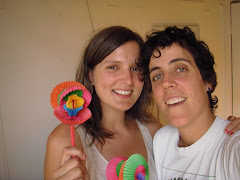We just arrived in Beijing after a wonderful visit in Xi'an. We were able to visit the Terracotta Warriors and the ruins of a local matriarchal village before meeting with Emily and Frank, our contacts in Xi'an. Emily is in school to become a teacher and Frank helps run a program that gets foreign teachers to China to speak English. We had another fascinating conversation with them about why the math education in China is so different than in the US.
But first.... The Terracotta Warriors
This was totally insane! Some crazy little kid back in the day who happened to be the emperor of China decided that for his death he wanted life-sized clay soldiers to protect him in his afterlife (or while he still continued to rule from the dead). He also invited the jesters, the servants, the cooks and the concubines (only if they were constructed of clay). Each soldier (there are 6,000 in one section) has distinctive facial features, some are skinny and some have beer-bellies.
We also learned that going to one of the wonders of the world in China on a Saturday is a pretty bad idea if you want to maintain any piece of your sanity. We were mauled over by old Chinese women countless times. But braving the strong 80 year-old ladies was worth it. So much of the museum makes your jaw drop, especially when you see things like the detail in the bottom of some soldier's shoe and then remember that they were all buried for centuries!
We have been talking about how we can make a math unit based on the Terracotta Warriors. Some ideas include having kids "construct" a shrine for themselves. They would have to figure out the cost of materials, the area they would need to create their shrine, the cost of employment and the amount of time they would need to make it. We hope to collaborate with a Social Studies teacher to create this project.
Back to our conversation about math... we met up with Frank Liu, a friend of Autumn's, a tour guide we had met in Guilin. Frank works for the Bruckland Group, an organization that trains foreign English language teachers in the cities of Guilin and Xi'an and then places them in rural schools. He brought us presents of Chinese math textbooks and invited us both to return to China as English language teachers -- next summer?!?
Frank brought Emily, a young math teacher in training at one of the many universities in Xi'an. She spoke to us about her training in the Xi'an primary schools and her plans of having her own classroom soon. We looked through the textbooks together, admiring their simplicity in comparison to our huge, hard-covered, glossy, and unnecessarily distracting American textbooks.
We asked Emily what kid of teacher she hopes to be -- "strict, of course" she responded. In many of our conversations about math education on this trip, the people we have spoken with have highlighted the intense nature of education in this country -- using adjectives such as "shame," "strict," and "pressure." Emily comes from a family of four, a large family by Chinese standards, and explained that she is one of 2 children who have gone on to college away from her small rural village. For her parents, going to college was not possible -- so it is a big deal for her family and community that she is going to become a teacher in the city.
When we asked Emily where most of the pressure comes from, she said "the mother, definitely." I (Ellie) was able to connect to that fact after many parent-teacher conferences where the Chinese mother asked their child, whose head was usually down, "Why do you have a 93% and not higher?" We spoke about the focus on education in the Chinese household -- how most children do not have household responsibilities such as cleaning or looking after their younger siblings -- their responsibility is their studies. I feel that I understand my Chinese-American students and the pressure they are under better after this trip.
We also asked her about something that we had been very curious about the entire trip -- the potty training rituals! Children under the age of two wear pants that have no inside seam -- it works as a slit. As tiny babies, the mothers use napkins to cover their bums -- and as the baby grows and the mothers learn their children's body rhythms, they know when the baby has to go to the bathroom. The mothers whistle when they know their baby has to expel and they then set the baby on the ground (very Pavlov) -- sometimes at the side of the street or on top of some spread-out newspaper. In short, there are no diapers. Babies' bums are viewable and there is much less plastic waste in the world. We saw this as very symbolic of the Chinese culture -- the children rise to the expectations of their parents. In America, children often wear diapers and pull-ups way past their third birthdays -- parents would hear about this Chinese practice and think -- my kid could never do that. The same goes, we believe, for math. Children are capable of a lot more than we give them credit for -- they are teachable and ready to learn. These babies are happier not walking around with a soggy diaper, just as the teenagers do their math homework without complaining and are able to tackle American college-level mathematical concepts at an earlier age.

No comments:
Post a Comment